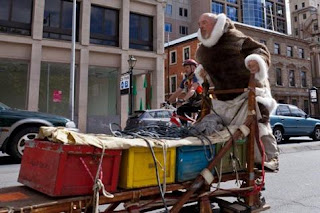It’s that time of year when Museums and the Web fans start to get excited as MW 2012 (April 11th -14th in San Diego) looms into our immediate consciousness. This will be my third (I was at MW2009 in Indianapolis and MW2011 in Philadelphia).
Each MW has an informal theme which either becomes apparent in the blogosphere before the conference or during the conference itself. 2011 was clearly about mobile platforms. And if there is one that I can spot for 2012 it is going to be around digital leadership.
Rob Stein’s paper is already being widely commented upon. Rob is a key person in this debate and we are all watching to see what he does in his new role in Dallas as the Dallas Museum of Art’s Deputy Director, where he has been head hunted by Maxwell Anderson. Max is the Eugene McDermott Director of the Dallas Museum of Art, and has enticed Rob from Indianapolis Museum of Art where he is the Deputy Director for Research, Technology, and Engagement. Max was formally the Director there. It was in that role that Max gave the opening address at MW 2009 in Indianapolis, an eye opening moment for me as there was a live twitter feed being displayed behind him to which everyone was glued at the expense of his presentation. The Indianapolis Museum of Art has been pioneering the role of museums in the digital age, and presumably Dallas will now lead the next stage of the journey.
But all this is particularly relevant to Rob’s paper which essential posits a new view of the type of leaders that museums need. This has prompted a wave of comment, from The Art Newspaper to Susan Cairns writing in the Museums Association UK comment page (‘Can a technologist get ahead in museums?’) saying “If we have museum directors who understand museums but do not understand (and commit firmly to) the altered technological landscape, how can museums possibly adapt to changing expectations”
I would suggest that the problem is not unique to the GLAM sector – witness the latest survey of PR agency Eurocom Worldwide which showed that 57% of CEOs had no idea how to quantify the effect of their social media presence (and more worryingly that 1 in 5 job applicants were failing to get hired because of content in their social media profile! - cited in BRW March 22nd 2012 edition).
But I would also suggest it is not the problem that Susan thinks. Maxwell Anderson has shown convincingly that you do not need to have encountered computers after formal schooling still to be able to get what current technology can do for the GLAM sector.
Julian Bickersteth
Managing Director
internationalconservationservices
25 years ... and 25 iconic projects
13 years ago







